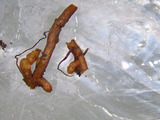
Alder module.Image and content credit: Fernando Agudelo-Silva
- Subject:
- Agriculture
- Forestry and Agriculture
- Material Type:
- Diagram/Illustration
- Author:
- Emily Fox
- Date Added:
- 08/22/2022

Alder module.Image and content credit: Fernando Agudelo-Silva

nanimate Life is an open textbook covering a very traditional biological topic, botany, in a non-traditional way. Rather than a phylogenetic approach, going group by group, the book considers what defines organisms and examines four general areas of their biology: structure (size, shape, composition and how it comes to be); reproduction (including sex when present); energy and material needs, acquisition and manipulations; and finally their interactions with conditions and with other organisms including agricultural interactions between plants and people. Although much of the text is devoted to vascular plants, the book comparatively considers ‘EBA = everything but animals’ (hence the title): plants, photosynthetic organisms that are not plants (‘algae’, as well as some bacteria and archaebacteria), fungi, and ‘fungal-like’ organisms. The book includes brief ‘fact sheets’ of fifty-nine organisms/groups that biologists should be aware of, ranging from the very familiar (corn, yeast, pines) to the unfamiliar (cryptophytes, diatoms, late-blight of potato). These groups reflect the diversity of inanimate life.
This updated edition was published in July 2022 and includes corrections, revisions, additional figures, and fact-sheets for several more groups.

Alder module.Image and content credit: Fernando Agudelo-Silva
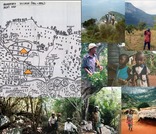
This module provides descriptive notes and images that can support teaching and learning about ethnobotany and landscape ethnoecology, or the integrative study of human-resource relationships. The photos and graphics are mostly derived from field study and research at Mt. Kasigau, Kenya (1999-2015) as a case example. I openly make them available through the OER site for educational purposes. The resources attached to the module include:I. Ethnobotany- descriptive notes and images (ethnobotany_notes_oer) and a powerpoint presentation (ethno_div_oer);II. Landscape Ethnoecology- descriptive notes and images (landscape_ethnoecology_oer) and a powerpoint presentation (landscape_ethno_oer);III. Participatory Inquiry in Ethnobotany and Landscape Ethnoecology- descriptive notes and images (ethno_participatory_oer) and a powerpoint presentation (ethno_process_outcome_oer);IV. Collaborative Field Guide to Woody Plants and their Uses at Mt. Kasigau, Kenya (kasigauplantbook_may2013.pdf)
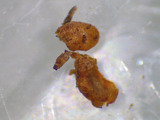
Alder module.Image and content credit: Fernando Agudelo-Silva
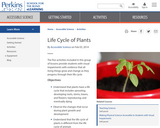
This activity was designed for blind learners, but all types of learners can use it to learn about the life cycle of plabts. The five activities included in this lesson plan provide students with evidence that all living things grow and change as they progress through their life cycle. All of the activities detailed in this lesson plan can be done with students who are visually impaired, if teachers adapt them using Resources for Teaching and Adapting Lessons for Students with Visual Impairments. Tactile models and braille materials will be key and all of the activities will require more time for repeated tactical exploration and expression.
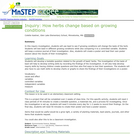
Students will create and investigate testable questions about how basil changes based on growing conditions.
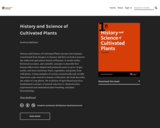
Short Description:
History and Science of Cultivated Plants narrates how humans transitioned from foragers to farmers and have arrived at present-day industrial agriculture-based civilization. It entails myths, historical accounts, and scientific concepts to describe how human efforts have shaped and produced easier to grow, larger, tastier, and more nutritious fruits, vegetables, and grains from wild plants. Using examples of various economically and socially important crops central to human civilization, the book describes the origin of crop plants, the evolution of agricultural practices, fundamental concepts of natural selection vs. domestication, experimental and methodical plant breeding, and plant biotechnology. Data dashboard
Word Count: 48729
(Note: This resource's metadata has been created automatically by reformatting and/or combining the information that the author initially provided as part of a bulk import process.)

This BioBulletin Web site takes a close look at the medicinal power of plants. The site includes text, videos, photographs, and interviews with key scientists. Age-Old Remedies discusses how nearly 80 percent of the world's population relies on medicines made from natural ingredients. The Power of Traditional Medicine takes an historical look at medicinal herbs and traditional healers. Bio-Prospectors Needed reports on the symposium "The Value of Plants, Animals, and Microbes to Human Health" that was held at the American Museum of Natural History. Tracking Down a Power Plant tells the story of a tree in the Sarawak rain forest that contains a possible cure for AIDS.
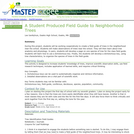
During this project, students will be working to cooperatively create a field guide to trees in the neighborhood near the school. In doing so they will be making observations, introduced to tree and plant anatomy and physiology, and will learn how to make and use dichotomous keys.
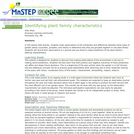
This activity is designed for students to discover how making observations of the environment is the key to making sound predictions. Students will also learn how both positive and negative outcomes of these predictions can affect and shape future decisions.
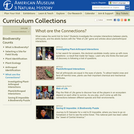
This unit gives students insight into how various living things, inanimate objects, and environmental factors are related. It is designed to be completed in four to seven sessions. The unit investigates the following two questions. What kinds of relationships exist among plants, arthropods, and abiotic factors? Can the presence of a plant species predict the presence of an arthropod species, and visa versa?

With a simple list of necessary supplies, science teacher Mrs. Seay gets her class completely involved in the task of identifying and classifying organisms found in local pond water.
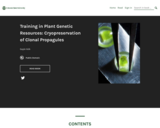
Long Description:
Need to add the following contributors:
Videographers: Mike May, Gayle Volk
Technical support: Remi Bonnart, Brittany Moreland
Word Count: 25579
(Note: This resource's metadata has been created automatically by reformatting and/or combining the information that the author initially provided as part of a bulk import process.)
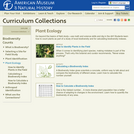
The unit is designed to be completed in six or more sessions. The comprehensive curriculum materials contain information for teachers, including activity tips and an overview of the many varied reasons that plant life flourishes in one plot but not another. Students speculate on why plants are more abundant in some areas of the site than others. They list factors that might account for the differences, such as temperature, humidity, light, soil, rainfall, wind, and human or animal activity, and figure out how they can collect more data on these factors. They discuss why it might be important to take a count of all the individual plants in each plot and develop a plan for conducting the field study. A reading selection describes how scientists count plants and gives students tips for conducting their own survey. Students then count plants and record their data. Several optional activities are provided.

This unit focuses on the movement of water through a plant and how it is driven by transpiration at the leaf. The unit is applicable to both a physical science classroom as it focuses on the properties of water as well as other physical science topics such as pressure, fluid flow, and surface area to volume relationships. The unit is also applicable to a biology curriculum as it covers the phenomenon of water movement through a plant. Many structures and adaptations are discussed that allow plants to achieve this process. The unit dives deep into the properties of water and how unique plant structures take advantage of said properties to move water from the ground to heights over 300 feet. There are classroom activities included as well as demonstrations mentioned throughout the text.
The phenomenon, or hook, for this unit is the movement of water against the pull of gravity, in particular to the top of our giant trees such as the Sequioa semperivens (giant redwood) which reach heights of over 300 feet. Teaching around a phenomenon is the current trend with the States adoption of the Next Generation Science Standards (NGSS). The use of water transport in plants is an effective phenomenon because not only is easy for students to grasp the oddity of water moving against gravity but also because the understanding of this action requires students to grasp scientific concepts from multiple disciplines.
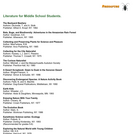
This reference list has more than 30 kid-friendly books on biodiversity. For each title, the author, publisher, and publication date are given. The diverse list includes field guides for identifying plants and insects, hands-on nature experiments and activities, photographic looks at the world's diverse species, and handbooks with tips about collecting and preserving specimens.

This video will help students, particularly those not in AP-level classes, have a practical application for knowing about the major divisions between plants, particularly about the details of plant anatomy and reproduction. Students will be able to :Identify the major evolutionary innovations that separate plant divisions, and classify plants as belonging to one of those divisions based on phenotypic differences in plants. Classify plants by their pollen dispersal methods using pollen dispersal mapping, and justify the location of a _crime scene_ using map analysis. Analyze and present their analysis of banding patterns from DNA fingerprinting done using plants in a forensic context.
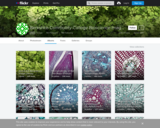
BCC Bioscience Image Library is a media file repository of images and video clips made available to educators and students in the biological sciences. The resources are created by faculty, staff and students of Berkshire Community College and are licensed under Creative Commons 0. This means all content is free, with no restrictions on how the material may be used, reused, adapted or modified for any purposes, without restriction under copyright or database law.
This project was partially funded by a $20,000,000 grant awarded by the U.S. Department of Labor’s Employment and Training Administration, Grant # TC-26450-14-60-A-25. The product was created by the grantee and does not necessarily reflect the official position of the U.S. Department of Labor. The U.S. Department of Labor makes no guarantees, warranties, or assurances of any kind, express or implied, with respect to such information, including any information on linked sites and including, but not limited to, accuracy of the information or its completeness, timeliness, usefulness, adequacy, continued availability, or ownership.
If you have any questions contact professor Faye Reynolds at: freynold@berkshirecc.edu
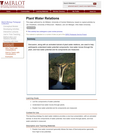
Plant water relations are presented in this learning activity to help participants understand the components of water potential, explain how water moves through plants, provide examples of plant adaptations to water stress, and have a general understanding of how water potential can be measured.